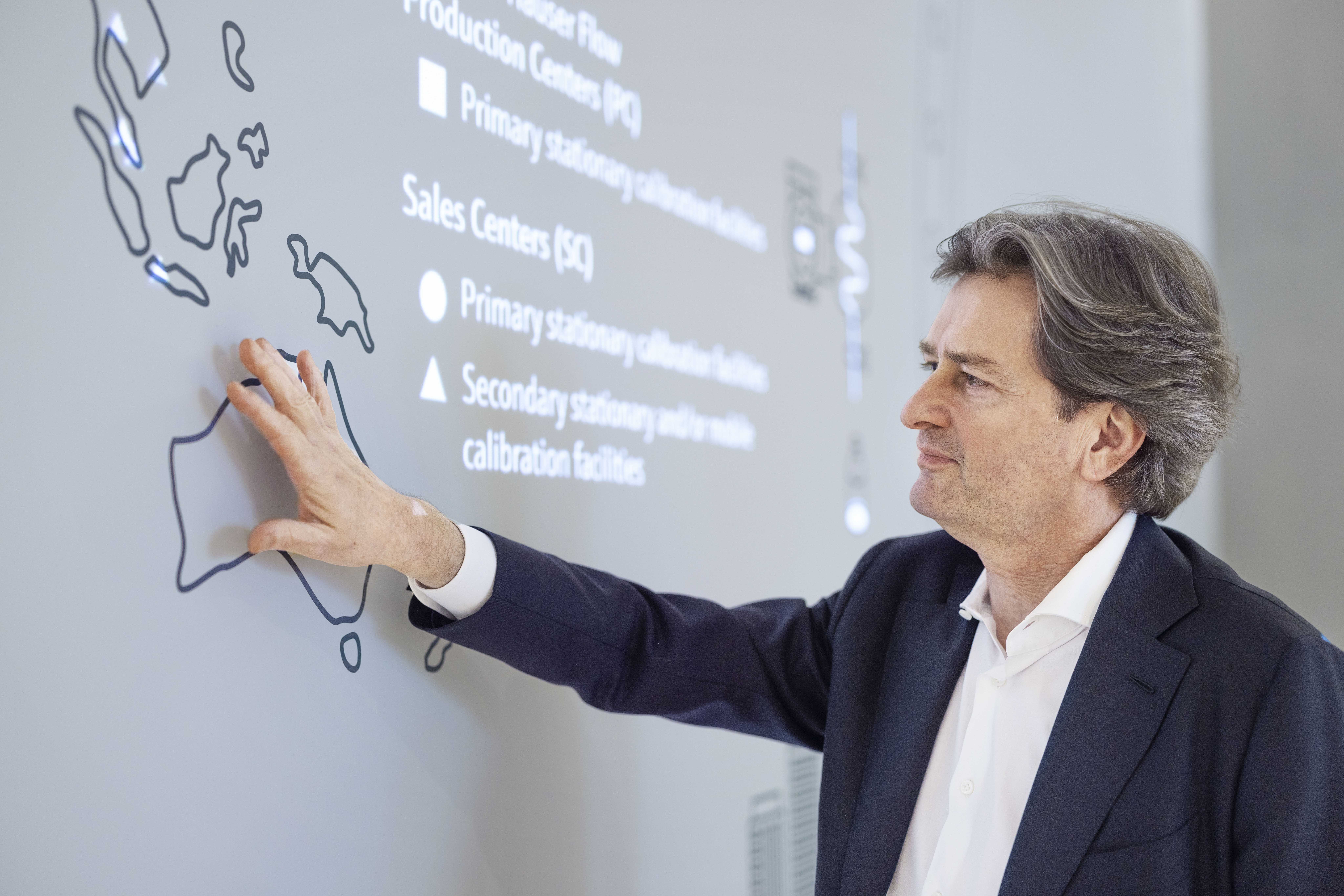Side by side
For long-term success, companies must build on proven strengths and press forward with new ideas. Endress+Hauser is a reliable partner on both counts – with a passion for innovation and a thorough understanding of customers’ needs.

In with the new
Staying in business entails embracing change. So how is Endress+Hauser working to keep its innovative edge through the decades to come? An interview with Dirk Neirinck, Corporate Director of Business Development.
INNOVATION
Mr Neirinck, what do you think is the secret to corporate longevity?
I can illustrate that based on the example of Endress+Hauser: the company began in 1953 as a pioneer in the field of electronic sensors. Today, it is the world’s leading provider of process and laboratory measurement technology, automation solutions and services. Over the course of seven decades, appealing products have kept Endress+Hauser as a constant on the market. Accompanying this, the company translated its innovations into profit that was reinvested in research and development. So the secret to longevity lies in the ability to keep on innovating and to capitalize on new ideas in order to continue offering value to customers.
Endress+Hauser’s customers come from the process industry, a sector with a rather long-term mindset.
Indeed. The process industry has product cycles sometimes lasting 20 to 30 years and demands the utmost in safety and reliability. Our customers count on us to maintain their installed base and continue adapting the existing portfolio to a changing environment. Some good examples are the energy transition and digitalization. At the same time, we must keep our eyes open to breakthrough developments.
Who’s in charge of that at the company?
Our culture of innovation has two main focus areas: on the one hand, some 1,200 R&D employees at the product centers look at ways to improve and advance our existing portfolio. The inspiration for these incremental innovations, as they’re known, often comes straight from customers who tell us their pain points and sometimes join forces with us in codevelopment agreements. At the same time, we want to explore the unknown for ourselves by using technology radars and agile development methods. Such experimental innovation hinges on having freedom outside our core business.
What approaches are you pursuing here?
One example is the University of Freiburg, where there is an on-campus innovation center at the engineering faculty known as FRIZ for short. Here we have brought together various small business units with experts on sensors, optics, biosystems, microsystems and the Industrial Internet of Things, all performing their respective research in close proximity. They inspire each other with innovative ideas and collaborate on sensor solutions for the future, such as sensors that mimic human senses. Our center of competence for level and pressure measurement has an innovation lab that deploys agile methods in its work on novel product concepts. Then there are predevelopment teams, likewise based near universities, that investigate how new technologies can become products.
Are development clusters like those unique at the company?
They play a special role indeed. It can be hard to understand what the signs on the doors at the FRIZ mean (laughs). What matters is the correct ratio of incremental to experimental innovation. Too much freedom means we’ll never arrive at marketable applications. But sticking too closely with the tried and true might cause us to miss potential game changers. We’re creating a healthy balance through open innovation.
What does open innovation mean, exactly?
Open innovation means focused receptiveness to people and organizations outside the company in the collaborative search for innovations. Alliances with customers and partner companies are part of that, alongside joint development projects with universities and research institutes, as well as start-up scouting, acquisitions and joint ventures. As an example, targeted acquisitions were how Endress+Hauser tapped into the business area of laboratory analysis and amassed new expertise in Raman spectroscopy and laser-based gas analysis. The same approach is also behind our expanded know-how in sensors and biosensors.
Is open innovation on the up?
Yes, because our world is constantly accelerating. We have more basic and applied research than ever before, just as we have more technologies. For a company facing such complexity, the only workable response is to open itself up. Going it alone no longer works in this world. When you share your ideas, you get more ideas back in the end.
Published 25.07.2023, last updated 14.08.2023.
Dive into the world of the process industry through new exciting stories every month with our «changes» newsletter!









